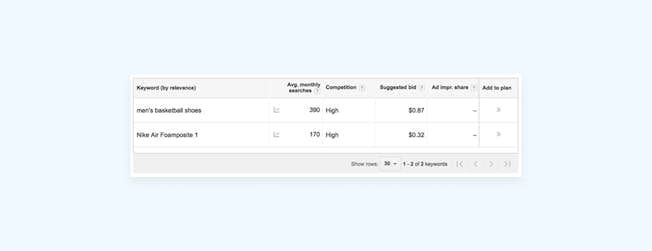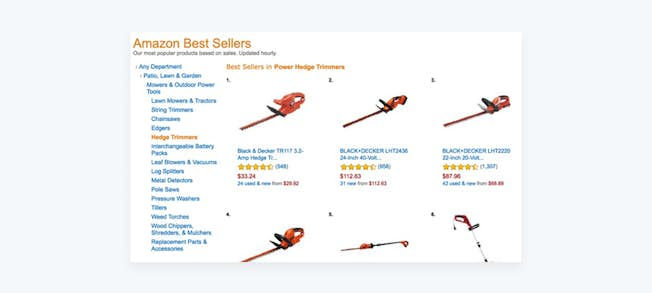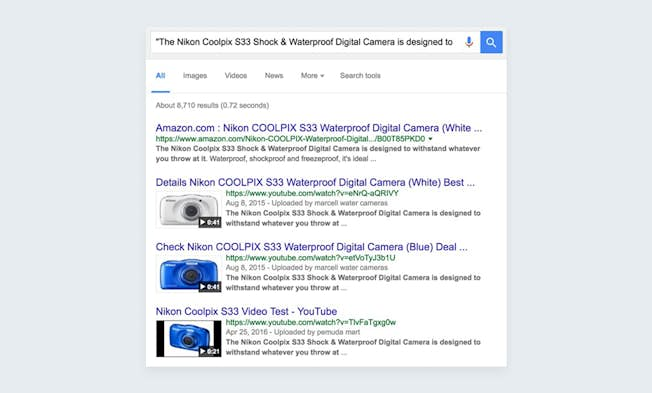Organic search is an extremely valuable source of traffic for any e-commerce merchant, as well as one that’s far too frequently neglected.
From poor quality content to site architecture that reduces search visibility, many online retailers make rookie mistakes that compromise their ability to rank for competitive keywords, drive traffic and attract new customers.
Would you like to improve your e-commerce website’s rankings? Although SEO for e-commerce might seem more complicated than SEO for a static, content-driven website, it’s far less difficult than you might imagine.
Below, we’ve provided six simple but highly effective search engine optimization strategies for e-commerce business owners. If you’d like to generate more search traffic, sell more products and earn more revenue, add one, two, or all six strategies to your SEO efforts.
“From poor quality content to site architecture that reduces search visibility, many online retailers make rookie mistakes”
Use generic, high-traffic keywords for product categories
Product keywords can be grouped into several different categories. There are specific product keywords, such as a color or type of product or a product’s model name, and generic keywords that describe a broad class of products.
“Nike Air Foamposite 1” is a specific product keyword, whereas “Men’s basketball shoes” is an example of a generic keyword. For maximum search visibility, you’ll want to structure your store around both keyword types.
Product keywords are covered using product pages. Generic keywords, on the other hand, are best targeted using categories. Before you start building your e-commerce website, it’s vital that you plan a site architecture that uses generic search keywords as product categories.
For example, here’s the search volume for the two keyword examples we listed earlier:

Of the two keywords, the generic one receives the greatest search volume. It makes sense for this keyword to serve as a product category keyword, since it will funnel users towards products that they’re interested in.
Amazon.com does this exceptionally well. The category page below is optimized for keywords like “hedge trimmers” and links to products that are optimized for their specific name and model number.

An effective e-commerce website uses category pages as funnels for two purposes: for directing internal searchers towards the products they’re looking for, and for attracting external searchers to help them discover relevant products.
Understand (and deal with) duplicate content problems
Since most e-commerce websites have hundreds or thousands of pages, duplicate content is a common problem. Product descriptions can appear on product pages, category pages, archive pages, in PDFs and all over the place, making it hard for Google to detect the original source of the content on your website.
Without knowing which page “owns” each piece of content, Google can struggle to work out how and where to place your e-commerce website in the search results.
Luckily, this problem is easy to fix. First, establish the source of any content that’s used across a variety of pages on your e-commerce website using canonical tags.
Second, make sure your content really is original. Many e-commerce websites use descriptions and promotional copy from product manufacturers and distributors, resulting in identical content appearing across hundreds of different online retailers.
When your goal is to rank number one for specific product keywords, this duplicate content can be a major thorn in your side.
For example, the Amazon listing for the Nikon Coolpix S33 digital camera contains the following product description, likely provided by the manufacturer: “The Nikon Coolpix S33 Shock & Waterproof Digital Camera is designed to withstand whatever you throw at it.”
Search for this phrase on Google and you’ll find more than 8,700 websites, all using an identical description to advertise the camera:

Since Amazon is the original source of this content in Google’s eyes (as well as the strongest website for this keyword) it’s extremely unlikely that any small e-commerce website could beat Amazon for this keyword using the same description.
Original content matters. Instead of using the manufacturer’s description for every product you add to your online store, get creative and write your own keyword optimized content. Once you begin to outrank the e-commerce giants, you’ll be very thankful you did.
Work long-tail keywords into your content
Data shows that the top 10,000 keywords in Google’s index receive less than 20% of all search traffic. This means that the long tail -- the long graph of lower-volume, less searched keywords -- makes up more than 80% of total traffic from search.
Optimize for the short tail and you’ll generate plenty of search traffic, albeit at the expense of the numerous long tail keywords that could generate thousands of sales every month for your online business.
The vast majority of people that arrive on your e-commerce website will arrive via keywords that are simply too small to appear in the AdWords Keyword Tool. If these keywords aren’t anywhere to be found in your product descriptions, your website is very unlikely to be visible to searchers.
To optimize for the long tail of search traffic, use your product descriptions and content (such as FAQs and comparison tables) to answer common questions and discuss topics that prospective customers are likely to search for.
Keywords related to a product’s build quality, materials, functional lifespan, guarantee, design or development might not be big enough to catch your attention in the AdWords Keyword Tool, but they can collectively contribute hundreds of thousands of visitors every month.
One of the easiest ways to increase your long tail keyword count is to use longer, more detailed descriptions on each product page. Aim for 1,000+ words of unique content per product page to maximize your search visibility and attract more visitors from long tail search terms.
Find high-traffic, underutilized keywords
As we mentioned earlier, e-commerce “giants” like Amazon often use generic product category keywords to group similar products together.
When a competitor’s product categories match the top keywords in the AdWords Keyword Tool, it can be difficult to outrank them. Luckily, many e-commerce retailers ignore high-traffic generic keywords for their product categories, giving you a distinct advantage.
These “hidden” keywords are often product variations, or subcategories that are big enough to generate tens of thousands of dollars every month in sales, but too small for a giant retailer to prioritize.
For example, here are Google search results for “black leather loafers” -- a generic keyword that receives 1,300 searches per month:

As you can see, the top-ranked results aren’t particularly well optimized for the keyword. None of them include “black leather loafers” in their title, and only one includes the target keyword -- albeit broken apart in a sentence -- in its meta description.
This keyword is a great SEO opportunity not just because it attracts more than 1,000 searches a month and has obvious commercial intent, but because other merchants have failed to target it.
Most generic product category keywords haven’t gone unnoticed by other merchants. However, the few that have -- especially when due to product categorization strategy -- are perfect targets for your initial SEO efforts.
Optimize for the fastest possible load time
Speed matters. Google has been very transparent about the fact that it uses a website’s loading speed as a ranking factor. If your website loads quickly, you’ll be rewarded with higher rankings in search; if it loads slowly, you’ll be penalized with lower search visibility.
Your website’s speed also matters from a conversion perspective, since a prospective customer will rarely stick around for several minutes waiting for each page to load.
Although it might not seem directly related to SEO, any effort you make to speed up your site’s performance will pay dividends in search visibility. Google’s Pagespeed Tools is a great place to start your optimization efforts.
There are short term costs associated with optimizing for speed, from hiring a developer to the cost of potential downtime. However, the long term benefits, both in search engine optimization and conversions, are more than worth the small investment.
Double check your on-page optimization
Not all e-commerce platforms are ideally configured for on-page SEO, making it important that you set up your on-page content, title tags, images and other content correctly.
Although it may seem a little SEO 101, start by ensuring that your primary target keyword is in your page title. If it’s a category page, make sure its title includes a generic keyword; for a page devoted to a specific product, include the product name, variation and model number.
Your secondary target keywords -- for example, product name variations and generic keywords -- should be used throughout the on-page content. Use secondary keywords in H1, H2 and H3 tags, with long tail keywords throughout the product description, FAQs and other body content.
Finally, make sure your images and videos are optimized effectively. Use relevant image alt tags and filenames to maximize your visibility in Google Image Search, and consider adding captions to any product demo videos, as they could improve visibility in Google Video Search.
On-page SEO is particularly important for attracting traffic from long tail search keywords. Since so few e-commerce merchants put any effort into optimizing for the long tail, great content could be all it takes for your e-commerce website to pop onto the first page for valuable keywords.
- Categories:
- Articles
- E-Commerce
Upgrade to Power Membership to continue
your access to thousands of articles, toolkits, podcasts, lessons and much much more.
Become a Power Member- Login
- View Courses
- - - -
- Courses
- Resources
- - - -
- My Account
- Change Password
- Logout




